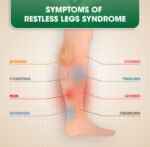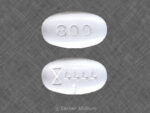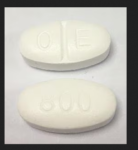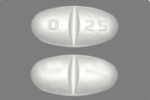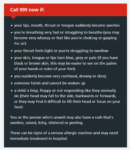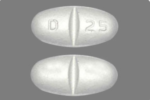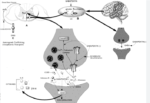It is rare to experience withdrawal symptoms from gabapentin, but it does happen. A review of medical journals published between 1993, when gabapentin was approved, and 2015, found 18 case reports of gabapentin addiction, dependence, or withdrawal.

Doctors publish case reports when they encounter a patient with a rare disorder or with a condition that they want to make their colleagues aware of. Case reports are significant because they help further knowledge and identify subjects worthy of future research.
It’s worth noting that just because there are so few reports of gabapentin withdrawal, doesn’t necessarily mean it’s as rare as people once thought. It’s possible that many people simply don’t seek treatment for gabapentin withdrawal.
According to the Drug Enforcement Administration (DEA), gabapentin use is on the rise. Doctors wrote more than double the amount of gabapentin prescriptions in 2017 as they did in 2011.
The illicit use of gabapentin also appears to be increasing.
In a small survey of prescription drug abusers in Appalachian Kentucky, 15 percent reported using gabapentin to get high. That number is a 165 percent increase from the year prior and a 2,950 percent increase from 2008.
Opioid users have reported using gabapentin to intensify their high. Cocaine users have reported the same, as well as attempts to use gabapentin to help alleviate cocaine withdrawal.
Signs and Symptoms
Among the documented cases, gabapentin withdrawal began between 12 hours and 7 days after the last dose.
The majority saw withdrawal symptoms within 24 to 48 hours.
The most common symptom was agitation, occurring in about half of the recorded cases. Confusion and disorientation were the next most common symptoms, followed by:
- Sweating
- Gastrointestinal symptoms
- Tremors
- Fast heart rate
- High blood pressure
- Insomnia
In many of the cases reported in the medical journals, individuals entered gabapentin withdrawal without the intention to do so.
This was typically a result of running out of gabapentin or leaving it at home during a trip out of town.
This sample of cases is unlikely to be reflective of most people’s experiences with gabapentin withdrawal. The reason for this is that only people with severe or alarming symptoms seek emergency medical treatment.
Among the cases reported, gabapentin withdrawal symptoms typically peaked three days after someone’s last dose. In almost all cases, doctors eventually treated the symptoms by resuming the previous gabapentin dose. Once people resumed their dose, their symptoms disappeared within hours.
Is Gabapentin Considered Addictive.
No. But it is possible to develop a physical dependence on the drug. In fact, people can experience withdrawal symptoms for up to 45 days after they stop taking gabapentin. Although gabapentin does give some people a euphoric “high” which can cause gabapentin abuse, gabapentin abusers do not present with the kind of compulsive, drug-seeking behavior or strong cravings that indicates addiction.
Unfortunately, our clinical experience suggests that gabapentin is now prevalent as a drug of abuse. The drug’s effects vary with the user, dosage, past experience, psychiatric history, and expectations. Individuals describe varying experiences with gabapentin abuse, including: euphoria, improved sociability, a marijuana-like ‘high’, relaxation, and sense of calm, although not all reports are positive (for example, ‘zombie-like’ effects).
In primary care, an increasing number and urgency of prescription requests cannot necessarily be explained by the increased number of cases of neuropathic pain. In the substance misuse service, the numbers admitting to using gabapentin are also growing.
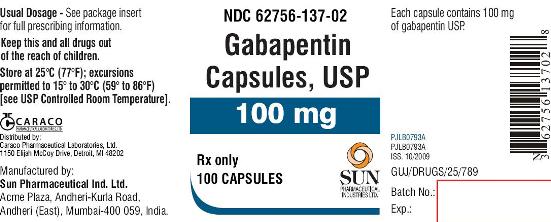
ncbi.nlm.nih.gov/pmc/articles/PMC3404313/
A 2007 report described the case of a 67-year-old woman with mood disorders and a history of alcohol abuse who was prescribed gabapentin (as well as naproxen and amitriptyline) for pain from polyneuritis. Owing to tolerance, she was prescribed 4800 mg/day (over the maximum recommended dose), but further escalated her intake to 7200 mg daily. She requested gabapentin without a prescription from pharmacists and visited numerous physicians, exaggerating her symptoms, to obtain the desired quantities.
When the patient was finally no longer able to obtain gabapentin through these methods, she developed withdrawal symptoms, characterized by trembling, sweating, excitation, pallor, and exophthalmia. The withdrawal required hospitalization, where a change to alternative pain control medications was made. Within several months, the patient had resumed abuse of gabapentin.
Another report described 3 cases of gabapentin-associated withdrawal symptoms after abrupt discontinuation of total daily doses of 4800 mg, 3600 mg, and 2400 mg.
Similar symptoms were reported in 2 patients with histories of alcohol abuse. The first case involved a 33-year-old man taking 3600 mg of gabapentin daily, which was twice his prescribed dose. He had been obtaining gabapentin refills early to reduce his craving for alcohol and make him feel calmer. When further refills were denied, he abruptly stopped taking the gabapentin and suffered acute withdrawal symptoms.
The second case described a 63-year-old man with a history of alcohol abuse who was taking gabapentin at 4900 mg/day instead of the prescribed 1800 mg/day. After presentation to the hospital and discontinuation of gabapentin, he developed severe withdrawal symptoms. Withdrawal symptoms in these patients included disorientation, confusion, tachycardia, diaphoresis, tremulousness, and agitation. The withdrawal symptoms resolved upon resumption of gabapentin.
The use of nonprescribed gabapentin by patients attending substance abuse clinics has also been reported.[8] A questionnaire-based survey completed by 129 respondents attending 6 substance abuse treatment clinics found that 22% of patients admitted to using nonprescribed gabapentin. As a comparison, nonprescribed use of pregabalin was 3%, benzodiazepines 47%, and cannabis 43%. Some patients taking nonprescribed gabapentin reported using the drug to become intoxicated or to potentiate the effect of methadone.
medscape.com/viewarticle/826680
Pain Medications, Pain Relief, and Pain Management
